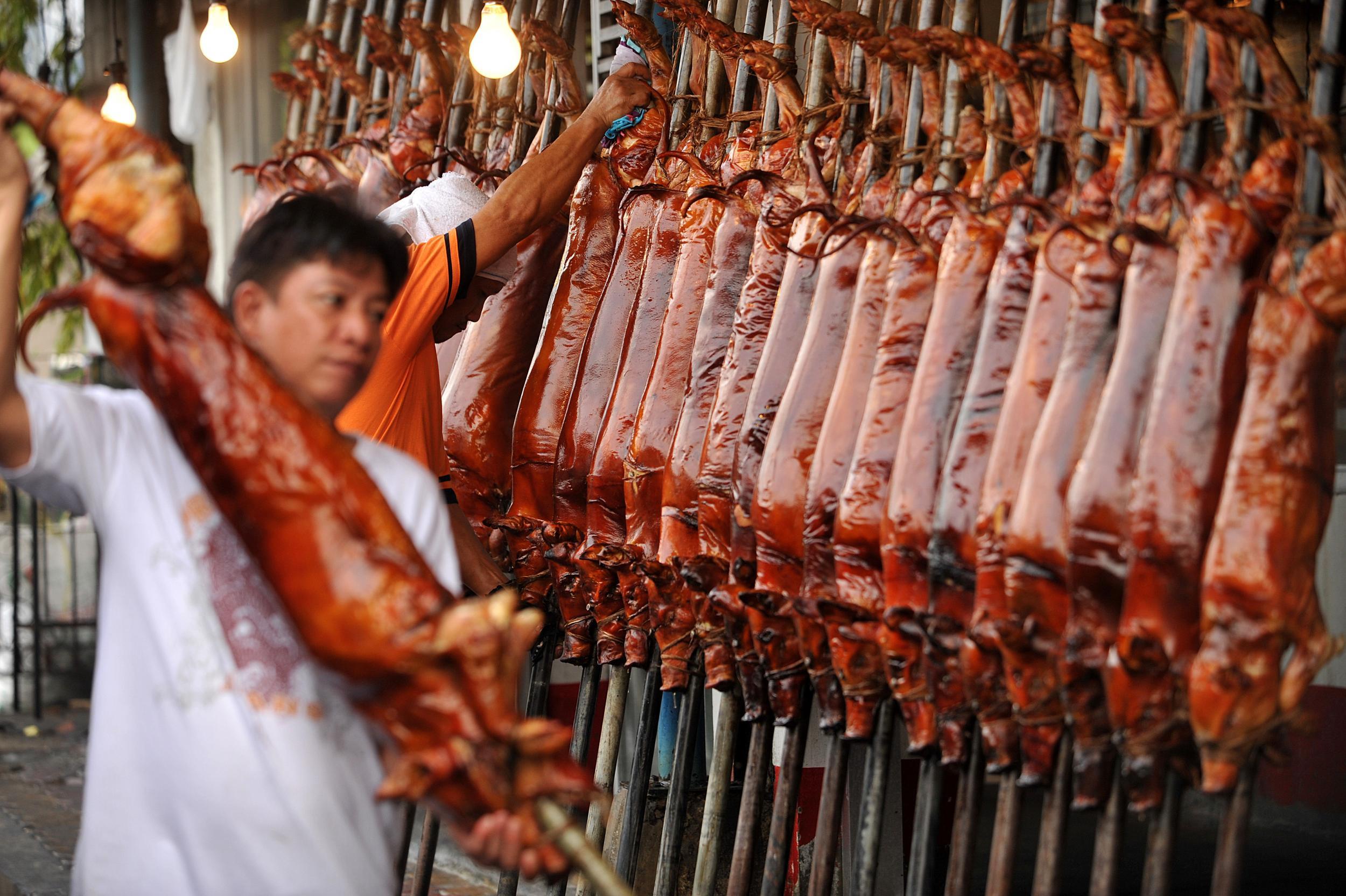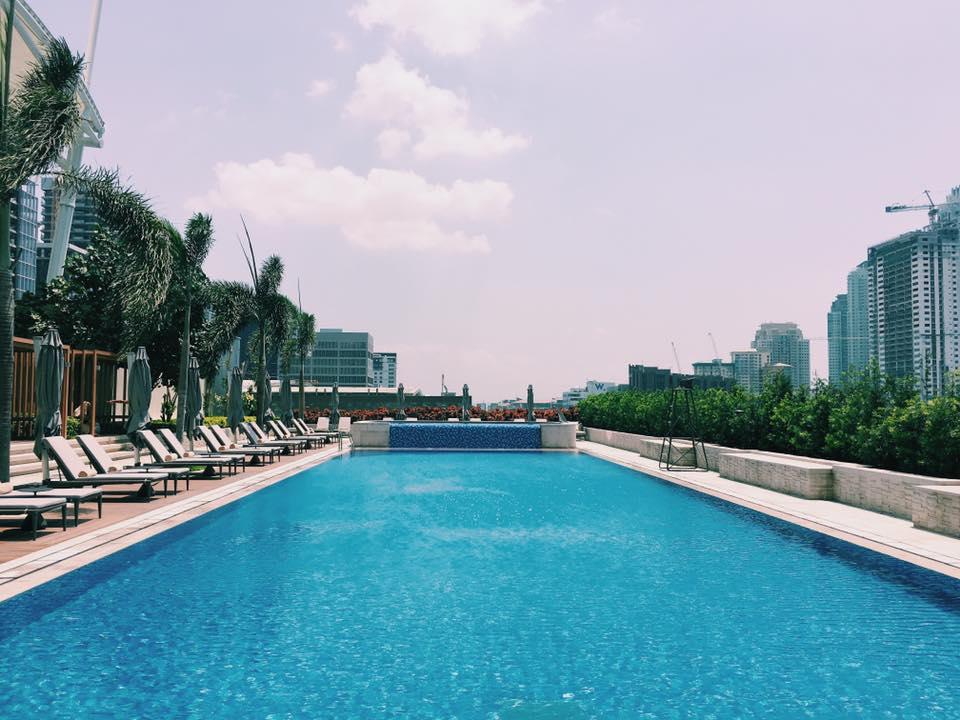How to do Manila in two days: From Trump Tower to huge steaks and the world's weirdest cemetery
From the 'Beverly Hills of mausoleums' to coconut-shell-chandeliers, the capital of the Philippines is a total riot

Your support helps us to tell the story
From reproductive rights to climate change to Big Tech, The Independent is on the ground when the story is developing. Whether it's investigating the financials of Elon Musk's pro-Trump PAC or producing our latest documentary, 'The A Word', which shines a light on the American women fighting for reproductive rights, we know how important it is to parse out the facts from the messaging.
At such a critical moment in US history, we need reporters on the ground. Your donation allows us to keep sending journalists to speak to both sides of the story.
The Independent is trusted by Americans across the entire political spectrum. And unlike many other quality news outlets, we choose not to lock Americans out of our reporting and analysis with paywalls. We believe quality journalism should be available to everyone, paid for by those who can afford it.
Your support makes all the difference.Why go now?
The Philippines megacity is back in fashion for the first time since Imelda Marcos stunned the world with her insane shoe collection. Paris Hilton’s team have broken ground on her second Manila beach club, while the arrival of the Milano Residences, a Versace-designed behemoth, marks a giant leap forward for the city’s trend credentials.
They’ll be joined in early 2017 by the ultimate skyline disrupter: Manila’s poutiest new landmark, the US President-elect’s shimmering 57-storey Trump Tower. If you thought the Philippines’ capital was all about chaos and monsoon rains, then think again: it’s undergoing a transformation so bonkers it may as well be screaming “Look at me”.
Get your bearings
Manila is at its sparkling best as seen from 71 Gramercy (1), a fantasy 71st-floor rooftop bar in Makati (115 D Tuazon, 00 63 917 809 4093; 6pm-6am), the city’s hyper-realised business and shopping district and one of Metro Manila’s 16 satellite towns.
To the north, hidden by towers and the perpetual fug of a traffic-fuelled haze, lies Intramuros (2), the medieval Spanish walled city and historic focal point for government and trade. To the fort’s south, the city’s green lung, Rizal Park (3), is home to ornamental gardens, fountains and a pantheon of national hero statues. Dwarfing them, modern Manila continues to shoot up at pace, the Second World War-battered centre now cradled by wave after wave of concrete shards, residential blocks and unfinished Jenga-like condos.
Day one
Take a hike
Begin a morning stroll in Intramuros (2) when it’s still cool. At this time, the tricycle guides are snoozing and the vintage horse-drawn carriages are tied up, so you won’t get hassled.
View the distinctive façade of the San Augustin Church (4), originally made of bamboo, then head towards nearby Santa Lucia Street to ogle the likes of Ferdinand Marcos and his cronies at the Philippine Presidents’ Gallery (5). Conspicuous by his absence from the series of outdoor sculptures lined up against the crumbling fort walls is current President Rodrigo “The Punisher” Duterte, who continues to cause international outrage with his hardline crackdown on the drug trade.

Farther north on Plaza de Roma, you’ll find the eighth reincarnation of Manila Cathedral (6), a church that simply refuses to go quietly. Damaged by fires, destroyed by typhoons and earthquakes, and a casualty of war during the Battle for Manila in 1945, it’s a testament to the dogmatic spirit of Filipinos, one of the most devoutly religious peoples you’ll ever meet. As a reminder you’re still in the tropics, its wrinkled masonry brow is pierced with stone-carved pineapples.
Lunch on the run
In the Philippines they swear by lechon, one of the world’s unhealthiest national dishes. A fatty suckling piglet soaked in salty soy then barbecued until cherry red, it’s served on street corners throughout the country. For a sleeker, stiff-upper-lip version, drop in to Ilustrado (7) (ilustradorestaurant.com.ph; dishes from £6.50), a restaurant steeped in old-world charm where the speciality is also kare kare, an oxtail and tripe stew drowned in sticky peanut sauce.

Window shopping
Across the courtyard you’ll find General Luna Street and Si-lahis Arts & Artifacts (8) (silahis.com; 10am-7pm), a colonial townhouse of antiques and local treasures where time seems to have stopped. Spread across its four floors are beautiful masks from the island of Palawan, intricately woven baskets, hand-spun textiles and beady-eye statues, most of which are never going to fit in your suitcase.
An aperitif
To mingle with local millennials, hop in a taxi to the new go-to destination Fort Bonifacio (9) before the city’s unbearable rush hour crush ruins your plans. Here modern Manila shows off its best hipster face, no more so than on Burgos Circle (10), a precinct crammed with US-influenced beer bars, smokehouses and burger joints.

Two to try for Filipino beer-food pairings are Big Bad Wolf (11) (Forbestown Rd, 00 63 2 822 5833; 11am-2am) and The Perfect Pint (12) (32nd Street, 00 63 2 823 1320; 10am-2pm). Also highly worth sniffing out are devilishly-good beers from the all-female run Palaweño Brewery, available at both of these bars.
Dine with the locals
Unlike other South-East Asian capitals weaned on noodles and broth, Manila is all about the meat, preferably when served up in slab-size portions. That explains the wall-to-wall well-heeled Manileños dining at Raging Bull Chophouse and Bar (13) (ragingbullchophouse-fort.com; dishes from £27), a new steakhouse only a short walk along 28th Street. While it firmly has its roots in 1930s New York (cue monochrome tiles, couchette booths, a lamp-lit whisky bar, and art deco fittings), the beef is grain-fed, dry-aged Australian and all kinds of good.

Day two
Sunday morning: out to brunch
Swamped with food markets, feng shui shops and faded temples, the neighbourhood of Binondo (14) is said to have been home to the first Chinatown in the world. There is no escape from this on Ongpin Street where the dim sum dumpling is king, so give in to a no-frills teahouse such as Mei Sum Tea House (15) (965 Ongpin Street; dim sum from £1.50) or President Tea House (16) on Salazar Street (mains about £3.50). They’re both survivors from a different era, but few places in the city remain better for a Cantonese blow-out.
A walk in the park
The mind-boggling Chinese Cemetery (17) north of the Pasig River (take the LRT train to R. Papa Station; 7am-7pm) is barmy on two counts: first, the deceased are buried in lavish mausoleums and tombs with every modern convenience imaginable (some even with working toilets, crystal chandeliers and air con units); second, the graveyard has a sizeable population who live side-by-side with their dead relatives in homes within the cemetery. Book with Old Manila Walks (oldmanilawalks.com; £15) for a highly-recommended walking tour to suss out what the heck’s going on.

Take a ride
The cobbled backstreets of Intramuros (2) are best explored by bike, especially on one made of bamboo. The brainchild of Filipino-American Bryan Benitez McClelland, Bambikes are made using a sustainable knit of bamboo and abaca twine and he champions fairtrade labour and sustainable building practices (bambike.com; rentals £3.20 per hour; guided tours £20; 10am-12.30pm or 3-5pm).
Special delivery! #Bambino by @bambike #Bamboobike #handmadeinthephilippines
A photo posted by Bryan Benitez McClelland (@bambryan) on
For the perfect tour, weave through the streets from the Bambikes workshop on Plaza San Luis (18) to Fort Santiago (19) for the backstory on national hero Dr José Rizal (Santa Clara Street; £1.20; 8am-6pm). From here, double-back via the world’s oddest Starbucks (20) inside a disused prison cell built into the city walls (corner of Muralla Street and Magallanes Drive; 9am-9.30pm) for a spritely circuit of the attractions and chess club tournaments of Rizal Park (3).

Cultural afternoon
Manila is characterised by four seasons: hot, hotter, wet, and super wet. Which makes an afternoon wandering the air-con galleries at the Ayala Museum (21) (ayalamuseum.org; £7) in Makati an easy sell. A labour of love for the Zóbel de Ayala family, arguably the richest in the country, it’s dedicated to Filipino culture, ethnography and art. The stand-out exhibit is the Surigao treasure, a dazzling hoard of more than 1,000 pieces of pre-conquest gold.
The icing on the cake
It has to be the crazy-as-cuckoo Coconut Palace (22) overlooking Manila Bay. Built by Imelda Marcos to impress Pope John Paul on his papal visit in 1981, the £30m presidential residence is so fanciful and extreme – everything in it is designed as an homage to the fruit, including a ridiculous 101-coconut-shell chandelier – it did exactly the opposite. The pontiff ended up staying in a far more modest hotel in Intramuros (2), but the palace still endures: a legacy of the crackpot rule of the Marcos family. It opens for erratic tours, so check first with your hotel.

Travel essentials
Getting there
KLM flies to Manila via Amsterdam from several UK airports, including London, Birmingham, Manchester, Glasgow, Edinburgh and Cardiff (klm.com; returns from £498). Ninoy Aquino International Airport (23) is 12km south from Manila’s historic centre Intramuros (2).
There is limited public transport to and from the airport, so the only real option is to bundle into a taxi. Fares should cost you no more than £7, with a one-way taxi ride to Makati costing £5. The three LRT and MRT train lines that intersect the city are a little clunky, but can be a handy way to avoid sitting in traffic (30p). Just don’t think about using them during rush hour, which is 6am to 10am and 3pm to 8pm; they become unbearably choked with commuters.
Staying there
The shiny new Shangri-La at the Fort (24) (00 63 2 820 0888; shangri-la.com) on 30th Street in Fort Bonifacio opened in mid-2016 and fuses high-rise glamour with luxury frills. What’s most impressive is not the army of concierges, heated pools or health clubs, but the views (and free canapés and cocktails) from the executive Horizon Club on the 40th floor. Doubles from £205, B&B.

Celebrating its centennial next year, the Belle Époque-style Luneta Hotel (25) (00 63 2 875 8921; lunetahotel.com) is a grand old dame overlooking Rizal Park (3). Despite the years, there’s no sign of any blips, wear or tear. For sunset romance, take the lift to its rooftop cocktail bar, which overlooks the glory of all that colonial-era Manila madness. Doubles from £68, B&B.
Few hostels in the Philippines are as switched-on to budget travellers as Pink Manila (26) (00 63 2 484 3145; pinkmanilahostel.com). It’s heavy on backpacker quirks, but also comes kitted out with penthouse views of the city, a pool and an enviable terrace to laze away the muggy afternoons in a hammock. From £8 for an eight-bed shared dorm.
Join our commenting forum
Join thought-provoking conversations, follow other Independent readers and see their replies
Comments